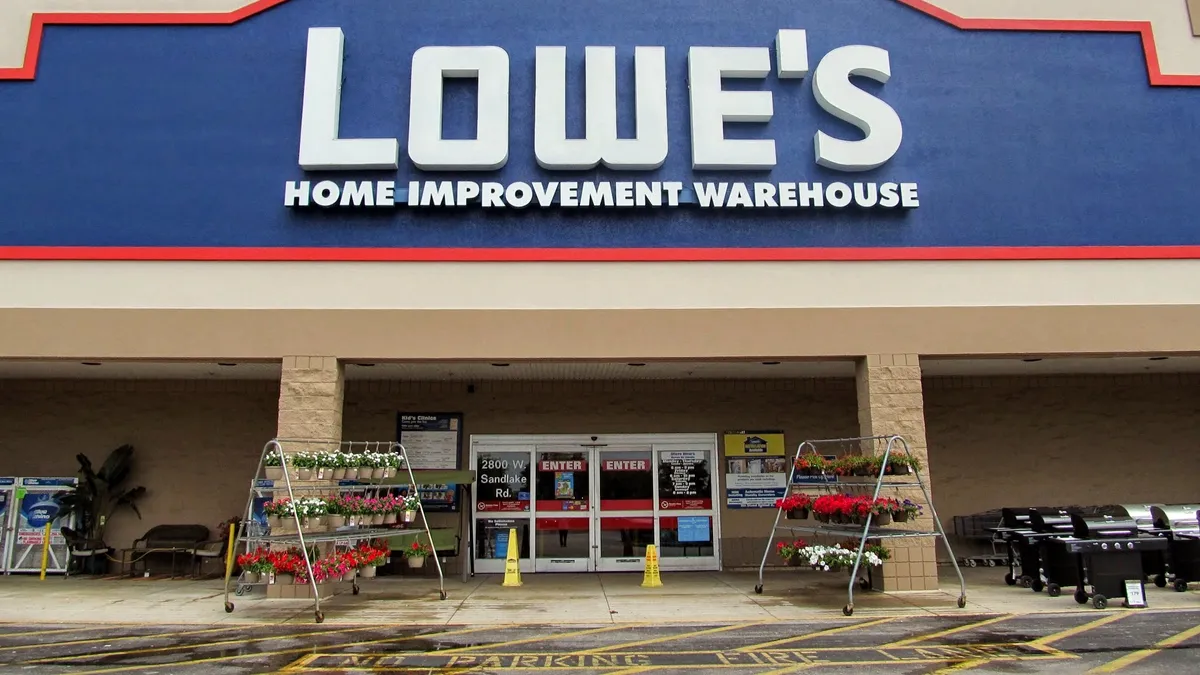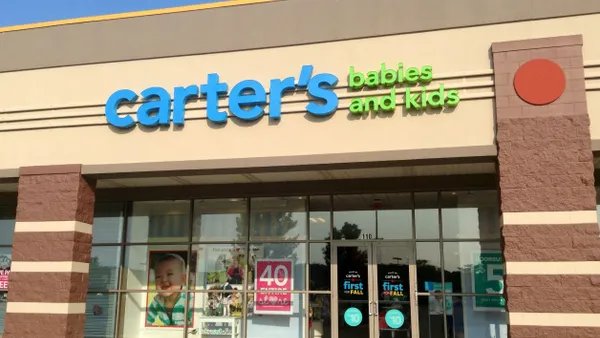Dive Brief:
- Lowe’s second quarter sales increased 6.8% to $19.5 billion compared to prior-year period, according to a company release. That fell short of the FactSet analyst consensus of $19.55 billion, according to MarketWatch. Comparable sales were up 4.5% and hit a peak of nearly 8% in July, executives said in a statement.
- Adjusted Q2 diluted earnings per share jumped 14.6%, to $1.57, from the same period last year. Despite the sizable increase, earnings fell short of Wall Street expectations, missing the FactSet consensus estimate of $1.62 a share, according to MarketWatch.
- CEO Robert Niblock said in a statement that the company’s performance in the first half of 2017 came short of management’s expectations, but he added that Lowe’s is making investments to boost sales. “This includes amplifying our consumer messaging and incremental customer-facing hours in our stores, which will put pressure on our operating margin,” he added.
Dive Insight:
High expectations: They’re the downside to being in one of the top-performing retail sectors right now.
Lowe’s sales and profit numbers would be a marvel were it a department store or apparel retailer. “Unfortunately, the better performance on the top and bottom lines were below forecast,” Neil Saunders, managing director of GlobalData Retail, said in a note emailed to Retail Dive. “They were also insufficient to offset the weaker results that Lowe's posted during Q1. ... Although compared to many retailers, Lowe's results are very positive, in the context of the home improvement market they are below par.”
Saunders added that Lowe’s still needs to improve its seasonal merchandising, such as outdoor categories; and while the retailer has made strides, it still lags rival Home Depot in brand perception and visibility in seasonal sales. More generally, the Lowe’s brand “still plays second fiddle to Home Depot, which remains more of a ‘go-to’ destination,” Saunder said.
Lowe’s has been dogged by Home Depot’s better performance in recent earnings periods. But both retailers have outperformed many other retail sectors, buoyed by a strong housing market and a trade that so far has seen little e-commerce encroachment. Some think the latter might not last, as Amazon increases its appliance offerings through a deal with Sears to sell Kenmore products. And the bright housing market might not last forever either, as some saw a slowdown after Home Depot’s less-than-stellar Q2 release.
Within the last year, Lowe’s has made a series of organizational changes as the company tries to differentiate itself and make good on doing business in a favorable segment. The company announced in January it would cut 2,400 jobs across its 285,000 U.S. workforce. The cuts were aimed to “better align store staffing with customer demand, shift resources from back-of-the-store activities to customer-facing ones, and enhance our efficiency and productivity," according to an internal memo obtained by the Charlotte Business Journal.
Lowe’s also announced in January that it would promote Marshall Croom, a 20-year Lowe’s veteran, to CFO following Robert Hull Jr.’s departure from the company. Just days later, Lowe’s named Jocelyn Wong, a former Family Dollar executive who joined Lowe’s in 2015, as its new chief marketing officer. The shakeup suggested Lowe’s was looking for new energy in how it appeals to, approaches and interacts with customers.













